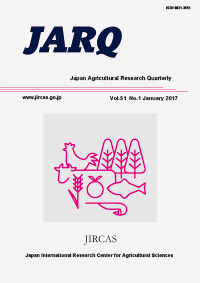We have developed a genetic marker that can identify a registered variety of mat rush in Japan. A vegetatively propagated plant, mat rush is cultivated and used as the material for the surface layer of tatami mats in Japan. Because it has been difficult to detect DNA polymorphism among mat rush cultivars, we applied restriction landmark genome scanning (RLGS) to discriminate mat rush cultivars. RLGS is a genome analysis technique that can detect many DNA polymorphisms as spots separated by two-dimensional electrophoresis. By cloning the DNA of spots specific to the superior mat rush cultivar ‘Hinomidori’ detected by RLGS, we developed a sequence-tagged site (STS) marker for polymerase chain reaction (PCR) analyses. This STS marker makes it possible to distinguish ‘Hinomidori’ specifically from other mat rush cultivars. The strategy of developing the STS marker in this study is applicable to other vegetatively propagated plants that are characterized by difficult DNA polymorphism detection.

